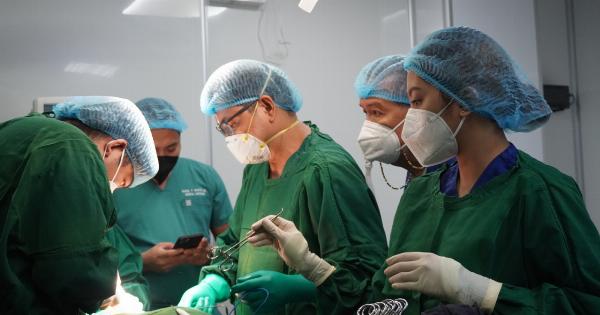Heart surgery has undergone a transformative change over the years, thanks to advancements in technology. One of the most significant changes that have taken place has been the introduction of endoscopic cardiac procedures.
These procedures are performed with small incisions made in the chest, through which specialized tools and equipment are introduced.
What are endoscopic cardiac procedures?
Endoscopic cardiac procedures are minimally invasive surgeries that are performed using advanced endoscopic technology. Rather than opening up the chest cavity with a large incision, smaller incisions are made in the chest wall.
Through these small incisions, a specialized camera and tools are inserted into the chest to perform the necessary surgical procedures.
Types of endoscopic cardiac procedures
Here are some common types of endoscopic cardiac procedures:.
Mitral Valve Repair
This procedure is performed on patients who suffer from mitral valve regurgitation, a condition that causes blood to flow back into the left atrium of the heart rather than being pumped out to the rest of the body.
Endoscopic mitral valve repair is a minimally invasive procedure that repairs the damaged valve, restoring normal blood flow through the heart.
Atrial Septal Defect Repair
Atrial septal defect (ASD) is a congenital heart defect that occurs when a hole doesn’t close in the heart after birth, which can cause blood to flow abnormally.
Endoscopic ASD repair is a minimally invasive procedure that involves sewing a patch over the hole in the heart, closing it off permanently.
Closure of Ventricular Septal Defects
Ventricular septal defect (VSD) is another congenital heart defect which causes a hole between the heart’s lower chambers. In endoscopic VSD repair, a tiny opening is made in the chest, and a small tube is inserted to direct the heart to the side.
A patch is then used to close the hole in the heart.
Ablation of Atrial Fibrillation
Atrial fibrillation is a type of arrhythmia, where the heart beats too fast or irregularly. With endoscopic ablation, the surgeon uses a small camera and specialized instruments to perform a series of small burns on the heart’s tissue.
This scarring allows the normal heart rhythm to be restored, stopping the abnormal heartbeat.
Coronary Artery Bypass Surgery
Endoscopic coronary artery bypass surgery is a minimally invasive procedure where a tiny incision is made in the chest wall.
The surgeon then uses specialized tools to bypass narrowed or blocked arteries in the heart, restoring blood flow to the heart muscle.
Benefits of endoscopic cardiac procedures
Endoscopic cardiac procedures offer a variety of benefits over traditional open-heart surgery, including:.
Smaller scars and incisions
The small incisions made in endoscopic procedures are significantly smaller than the large incisions used in traditional open-heart surgeries. This means that patients recover much quicker with less pain and scarring.
Less pain and complications
Since endoscopic procedures are minimally invasive, they cause less pain, bleeding, and risk of complications for patients. Additionally, the risk of infection is greatly reduced compared to open-heart surgery.
Shorter hospital stays and recovery times
Patients who undergo endoscopic cardiac procedures typically spend less time in the hospital and recover much quicker than those who undergo traditional open-heart surgery.
This can help patients get back to their normal routines faster, leading to a higher quality of life.
Higher success rates
Endoscopic cardiac procedures yield results that are comparable to or even better than traditional open-heart surgeries. Patients experience lower mortality rates, fewer complications, and better long-term outcomes.
Challenges and limitations of endoscopic cardiac procedures
Despite the many benefits of endoscopic cardiac procedures, there are some limitations and challenges associated with them as well.
Availability
Endoscopic cardiac procedures require specialized equipment and expertise, which may not be available in all hospitals. This can make it difficult to access these procedures for patients who require them.
Complexity
Endoscopic cardiac procedures are complex surgeries that require a high level of skill and expertise to perform. Surgeons require extensive training and experience, and not all surgeons are qualified to perform these procedures.
Possible complications
Although endoscopic cardiac procedures are generally associated with fewer complications than traditional open-heart surgery, they are not without risks.
There is still a risk of bleeding, infection, and other complications associated with these surgeries.
Cost
Endoscopic cardiac procedures can be more expensive than traditional open-heart surgery, mainly because they require specialized equipment and expertise.
This can make them more challenging to access for patients who may not have access to adequate insurance or financial resources.
Conclusion
Endoscopic cardiac procedures have revolutionized the field of heart surgery, offering improved outcomes and faster recovery times for patients.
These minimally invasive procedures offer numerous benefits over traditional open-heart surgery, including smaller incisions, less pain, and quicker recovery times. Although there are challenges associated with these procedures, including cost and complexity, they have emerged as a crucial tool in the fight against heart disease.



























